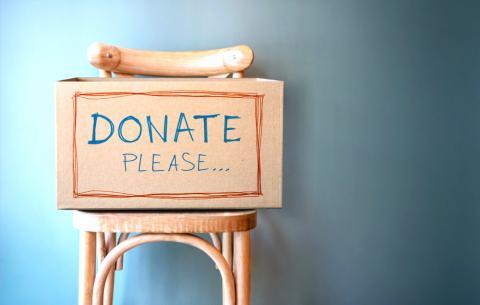
Clutter creates a mess, and messes add to stress. To destress your mind, cull the clutter from your home—and it doesn’t have to be KonMari if you don’t like it.
The Internet is abuzz with everything related to the Marie Kondo way of living—if it doesn’t spark joy, it isn’t worth having. And there might be some truth in KonMari, even if you do not go the extremes of it. We do know that decluttering is a good idea, but even the best of us procrastinate cleaning up to a nearly impossible stage. How about we never let the clutter grow instead? Sounds fantastic, and with a few easy steps, it can be done. Here are some tips and tricks that aren't KonMari, but are just as effective...
1. Start With A No-Clutter Zone
The first thing to do is to declare one place in your house as a no-clutter zone. And declare it loud and long. This is the space you will start decluttering from, and never allow any clutter back on or in it again. And it could be anything: a shelf, a cupboard, or just the couch. Slowly start expanding this area—if you started with the couch, expand to the whole living room. If it’s a shelf, make it the whole wall and then the room. Nothing in the no-clutter zone should be anything that doesn’t belong there. Just try and keep the expansion to your own space—we doubt the neighbors would appreciate your no-clutter rule if it extends to their home!
2. Create A Donation Box
You don’t have to wait for a thing to get old to give it away—if you haven’t used it for six months, and probably won’t use it for more time to come, it is time to give it away. Overspending and hoarding have become somewhat of a lifestyle for many today. There’s always more to buy, another sale to score and more to show off. The result is often that we are left with more than we can actually use. Letting things stew in storage isn’t morally right; it's better that they come in handy for someone in need. And remember, the earth is round, what you send out will eventually come back to you—so make it good and positive. For a month, put one thing in the donation box everyday. After 30 days, your house will be cleaner and your heart a lot happier. Imagine after a year, your home would be 365 things lesser, and your heart 365 times fuller. How's that for a New Year?
3. Throw Away What Cannot Be Donated
Sometimes, things are not really worth being donated. They may have outlived their purpose, generation, or time and are fit only for the trash bag. Of course, recycle what you can please. By trash, we don’t necessarily mean the landfill. What you cannot use or give away has to be thrown out. Again, like with donation, make a monthly trash box in which you throw out a thing every day. You can even make two different boxes—one for trash, and one for recycling to make things easier for you at the end of the month.
4. Create A Maybe Box
Then there are those things that you tend to be attached to—you can’t use them, but you don’t want to donate or throw them away. So how do you figure out what to do with them? Try creating a maybe box. Put all things that confuse you in the box, and stow it away for the 3-6 months. Once the time period has passed, open out the box. Chances are, you may realize what you need to do with these things now, considering you may not have even missed them. Then you can choose to donate them, or toss them, or recycle them—depending on their condition and usefulness.
5. Put Things Back In Their Place
Many a time we add to the clutter in our homes by taking out something and not putting it back in its right place. It adds to the general malaise of a stuffed-to-the-brim home and makes spaces look messy and unwelcoming. Remember to make a proper place for everything, and once you are done with the things, put them back where they belong.
6. Train The Other Members Of The House To Do So Too
Very often homes face a clutter crisis because there is only one person tackling it. Make sure the back-in-the-place rule extends to all family members, including the kids. They have to be taught to take care of their own room and ensure there is no mess and clutter of toys, crafts, and other kiddie paraphernalia.
7. Try the 12-12-12 Challenge
The 12-12-12 challenge is simple—you need to find 12 things each to give away, to throw away, and to put back in proper place. While you can do it alone, you can also turn it into a game for all the family members (the adult ones at least if the kids are too young) and see who accomplishes what in the fastest time. Just like that, there will be 36 items lessened from the clutter in your home, more if there are multiple players. With kids, you can do a 5-5-5 to make sure their little hands and brains can manage the stress of sorting.
8. Label Things When You Store Them
Very often, we are in such a tearing hurry to store things that we often forget where we put what in the first place. When you suddenly need a particular thing, digging it out of your stored but forgotten places means you’ll end up creating a ton of clutter. The next time you store something, label it—or better still, write it down to make sure you remember where you put what!
9. Learn To Love Open, Clean, Empty Spaces
Ask a psychologist about why you keep spending money on things you don’t need and they’ll talk about how you may be filling up a hole in your heart, or soul. Maybe so, but to declutter, you first have to love the decluttered look. Make sure you like open and empty spaces and don’t mind that mild echo that comes along with having a home devoid of anything you do not need, want, or love. Once you love the decluttered look, you’ll automatically kill clutter wherever you spot it and not have to scramble to make your home guest-ready at the last minute.
10. Put Everything You Want To Buy On A 30-Day Hold
The next time you want to buy something, add it to a 30-day buy list. Mention the date you added anything to the list as well and keep that thing on the list for a requisite 30-day waiting period. After 30 days, see if your need for that thing has grown or waned. If it is the former, by all means, do go ahead but if you find that you do not need it so much after all, congratulations, you saved yourself some money, and some decluttering in the latter as well.
That’s all from us about decluttering—these steps may not sound like much, but try following them to see the clutter around slowly start to disappear, leaving you both a cleaner and an easier-to-clean home space.
If you have any decluttering aces up your sleeve, do share it with us in the comments section below.








